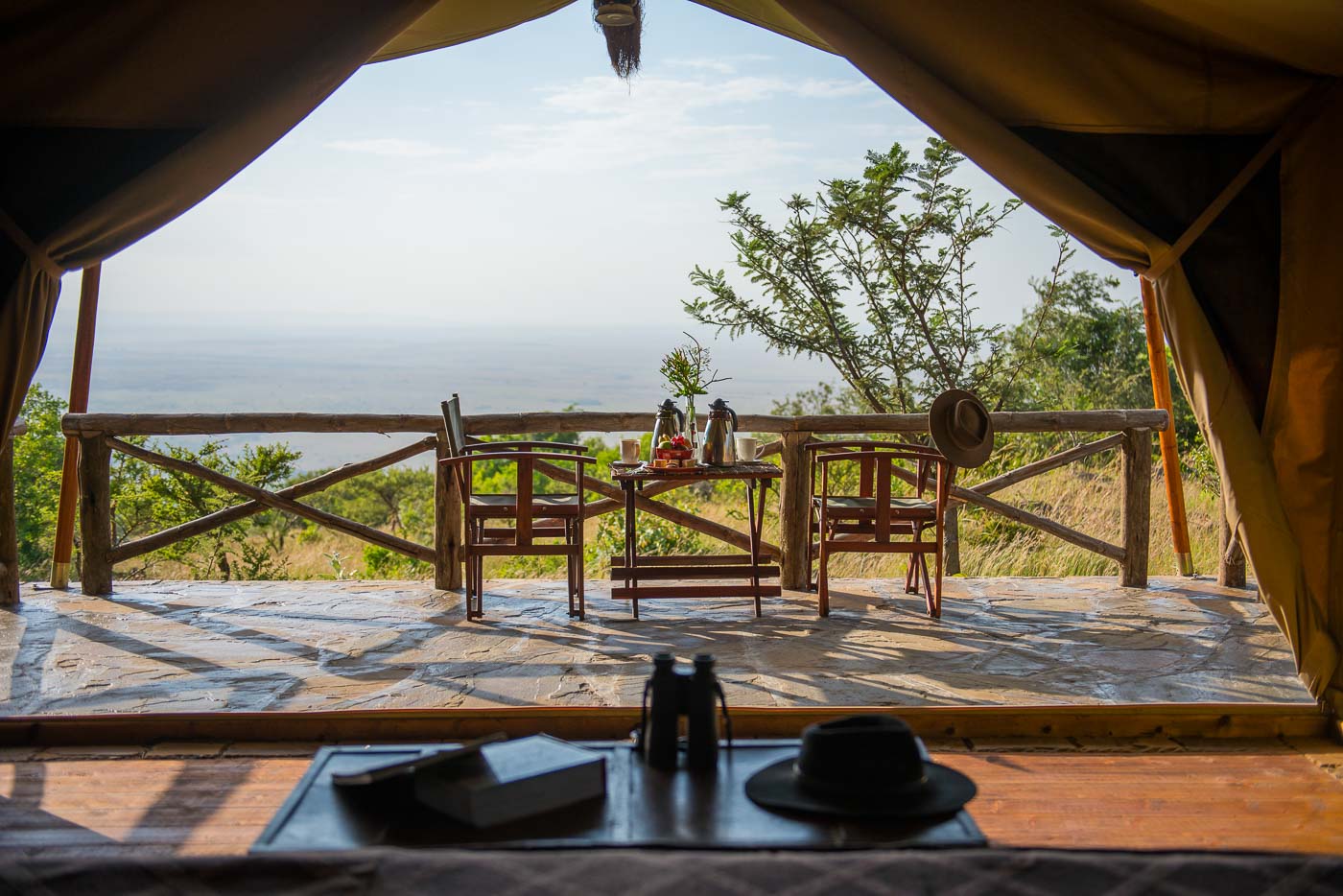It’s like watching a huge panoramic IMAX movie, except this is no film. This is the Serengeti.

The Four Seasons Safari Lodge Serengeti sits right in the heart of the world famous national park with stunning wildlife just off the deck as entertainment. It’s truly incredible.

Four Seasons Serengeti puts the “glamour” in glamping. In fact, let’s be honest, you’re not camping at all. This is pure luxury in the heart of Africa.

Our first night, we sit outside at dinner at the main restaurant and hear a roar from a herd of elephants not far in the distance. Since it’s pitch black out (no city light pollution anywhere here), we can’t see them, but the sounds are incredible and just add to the magic of this place.

After dinner, I head to my room—a huge suite designed with local materials of wood and natural stone tile. With a rustic yet luxuriously modern feel, it has a large sitting room and closet, a table area, a huge bathroom with soaking tub offering views right out the window of the animals and a large balcony with sofas. I’m sure to lock my screen door as I’m told the baboons are known to open them and fall asleep to the sounds of the savanna. Oh, and although the watering hole is within view from my window, there is even a live animal cam 24/7 tuned to a channel on the TV in my room, so I can see who’s coming and going.

The property has been open for just four years, and just the last two years under the Four Seasons name. This is no small “campground.” There are 77 rooms, 12 suites, and five villas including an enormous presidential villa with its own watering hole. Of course, the hotel has a fitness center, a spa with six separate pavilions for private treatments and a new yoga room, a kids’ playroom, a comfy den-like TV room, and even a discovery center with information about the landscape and wildlife.

Nearly everything is centered around the outdoor deck and pool where you’ll just want to sit and take in the view of the watering hole. It’s so nice to get out of a dusty, jostling safari vehicle for a day (or three!) and sit here while the animals come to you. The water attracts elephants, zebra, wildebeest, antelopes, baboon, lions, and giraffes.
The hotel also offers:

There are three different restaurants to choose from, Maji, overlooking the watering hole with outdoor dining where you can hear lions roaring in the darkness; Boma Grill, the traditional African restaurant and Kula’s with international and African-inspired fare. My first night I enjoyed the grilled octopus and a fillet of beef with truffled mashed potatoes.

In the morning, I awake and head straight to my balcony. A baboon is eyeing me from the adjacent balcony while six giraffes and a family of five elephants saunter by on their way to the watering hole. Every time I try to leave my room to head to breakfast, another group of animals catches my eye and I head back out to the balcony with a huge grin plastered on my face. I think I try to leave a half a dozen times.

Just down a few steps from the main indoor/outdoor restaurant is an infinity pool literally overlooking the watering hole. You feel like you’re right there with the elephants. Although there is a drop in height between you and them, the wonderful thing is, there are no fences, no boundaries, no limits. This is not Disney World. It’s open land for all.
Lisa Lubin is an established travel/food writer, three-time Emmy®-award winning TV producer, and travel industry expert. After a decade in broadcast television she took a sabbatical, which turned into three years traveling around the world. She documents her (mis)adventures on her blog, LLworldtour.com. You can follow her adventures on Facebook, Twitter, and Instagram.
Lisa Lubin is an established travel/food writer, three-time Emmy®-award winning TV producer, and travel industry expert. After a decade in broadcast television she took a sabbatical, which turned into three years traveling around the world. She documents her adventures on her blog, LLworldtour.com. You can follow her on Facebook, Twitter, and Instagram.



 Image Credit: Save The Rhino Trust Namibia
Image Credit: Save The Rhino Trust Namibia Image Credit: AfriCat Foundation
Image Credit: AfriCat Foundation Image Credit: Mustang Monument Wild Horse Eco-Resort
Image Credit: Mustang Monument Wild Horse Eco-Resort Image Credit: Maasai Wilderness Conservation Trust
Image Credit: Maasai Wilderness Conservation Trust

